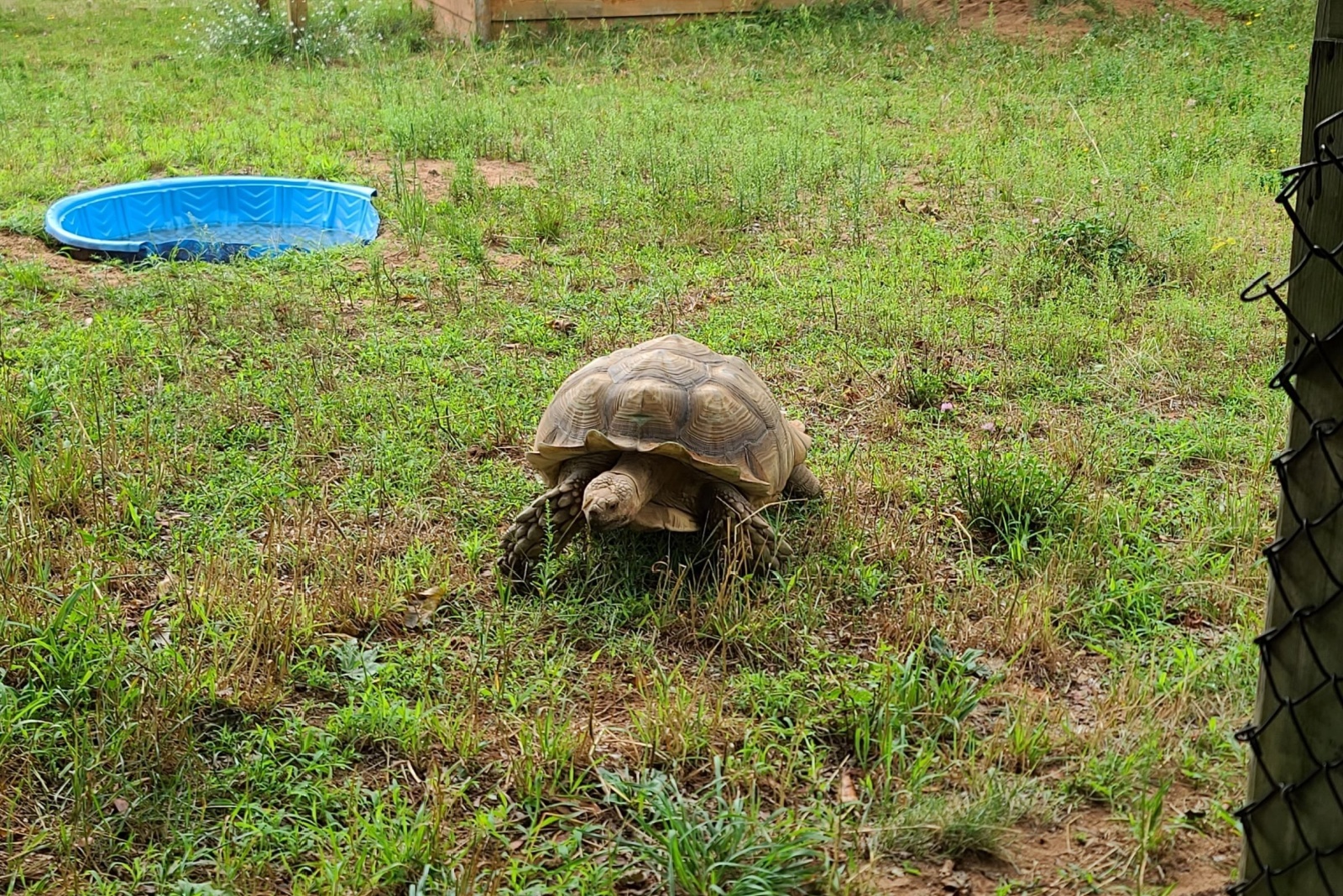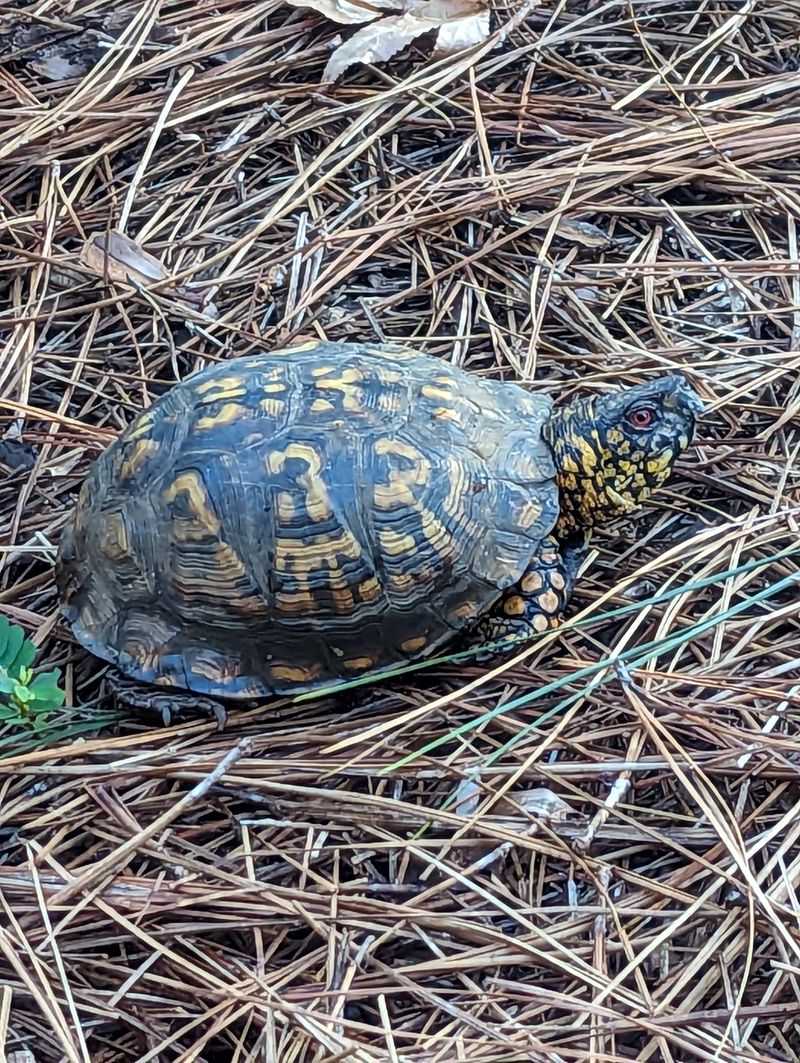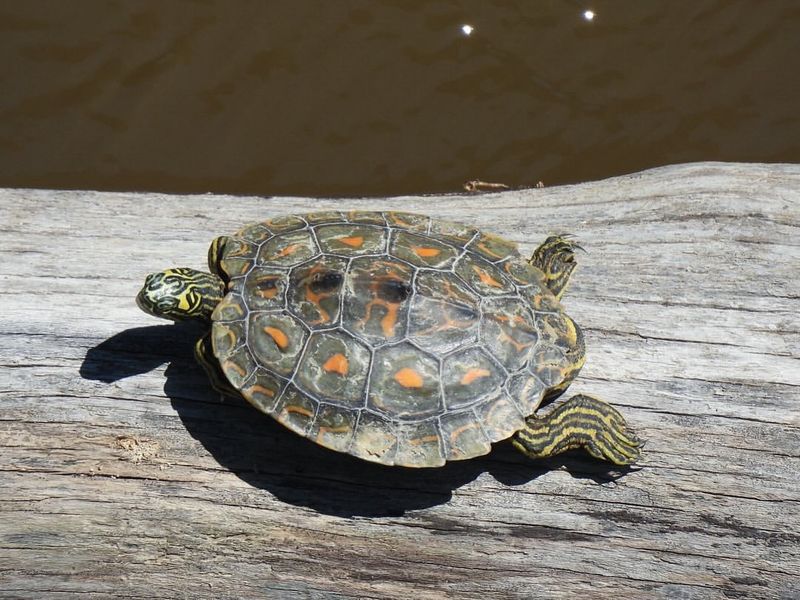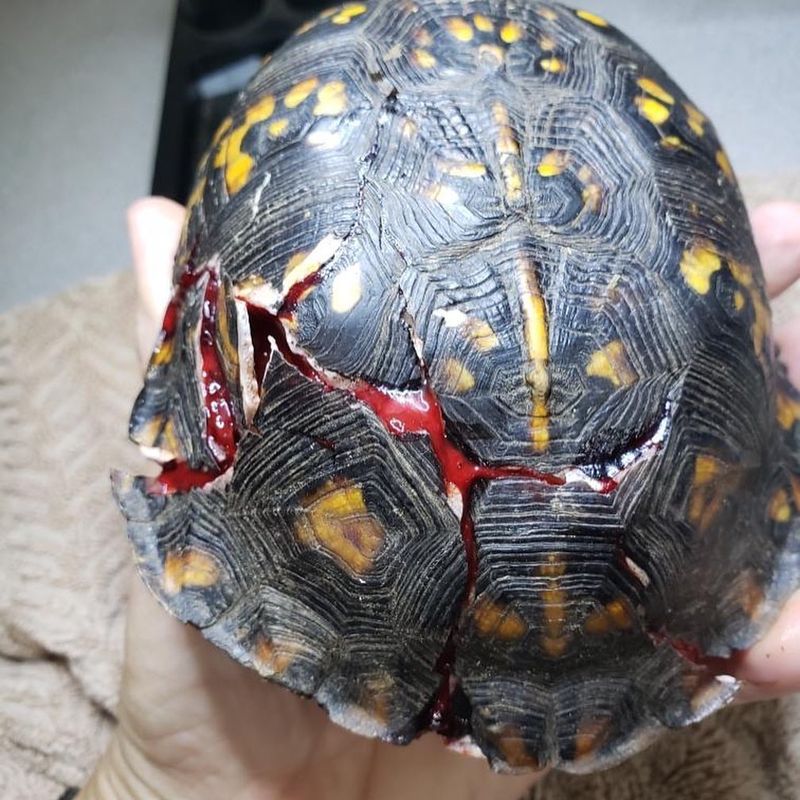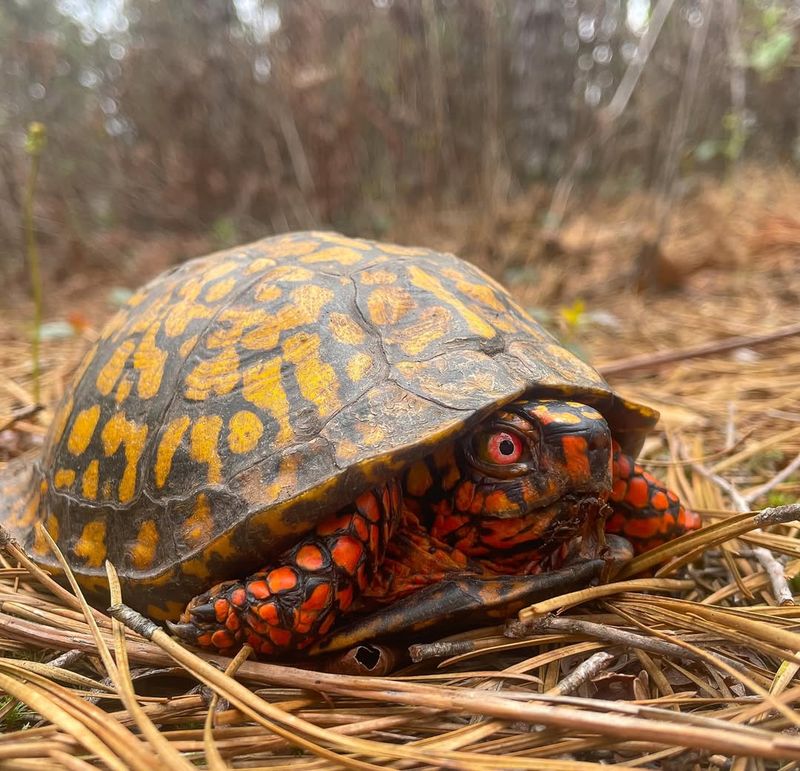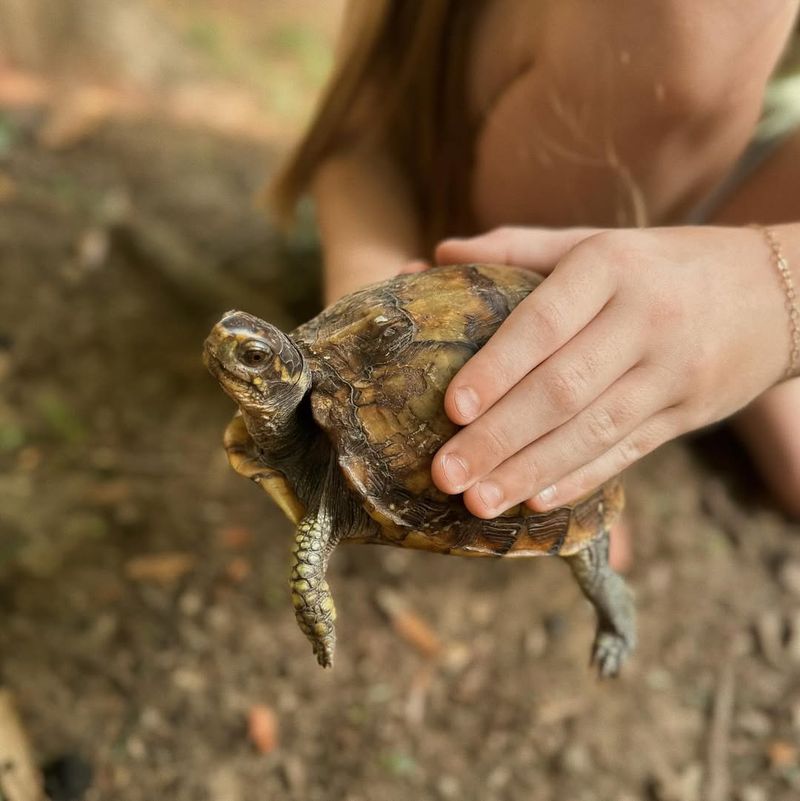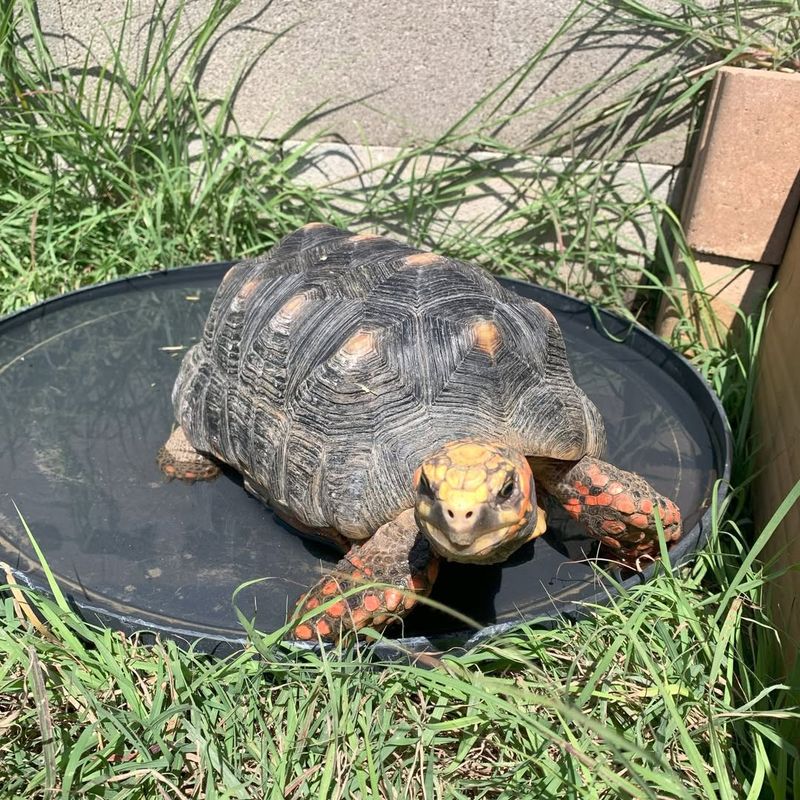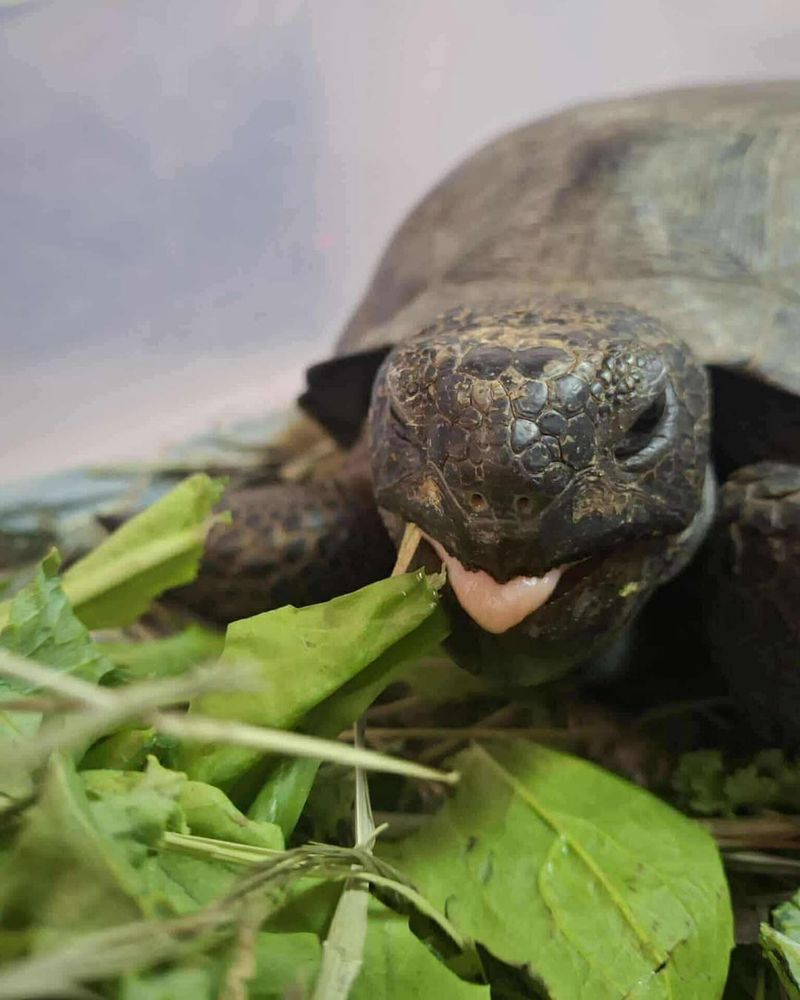Every so often, Georgia homeowners get a special visitor—a turtle quietly crossing the yard on its own mysterious mission. It’s a charming sight, but also one that comes with responsibility. Moving or handling the wrong way can do more harm than good.
A few simple steps can make all the difference in helping your guest continue its journey safely while keeping your backyard wildlife-friendly.
1. Stay Calm And Keep Your Distance
Spotting a turtle in your yard might make you want to rush over for a closer look, but giving it space is the smartest move. Turtles can feel threatened when humans approach too quickly, and some species may bite or scratch if they’re scared.
Watch from several feet away to observe what type of turtle it is and what it’s doing. Keeping pets and children at a safe distance prevents stress for the turtle and keeps everyone safe from potential defensive behavior.
2. Identify The Species Carefully
Georgia hosts over a dozen turtle species, and knowing which one you’ve found makes a huge difference. Box turtles have domed shells with colorful patterns, while snapping turtles have rough, dark shells and powerful jaws that demand extra caution.
Painted turtles and sliders have flatter shells with smooth edges. Taking a photo from a safe distance helps you research the species online or contact wildlife experts for accurate identification and guidance on next steps.
3. Check For Visible Injuries
Once you’ve identified the turtle, look for any signs of harm without touching it. Cracks in the shell, bleeding, limping, or unusual lethargy could mean the turtle needs professional help right away.
Road accidents, predator attacks, and lawn equipment injuries are common problems for Georgia turtles. If you spot any injuries, contact a local wildlife rehabilitator or veterinarian who specializes in reptiles rather than attempting to treat the turtle yourself at home.
4. Avoid Relocating Unless Necessary
Many people assume turtles are lost and need rescuing, but most are simply traveling between feeding areas, nesting sites, or water sources. Moving a turtle far from where you found it can actually harm its chances of survival since turtles have strong homing instincts.
If the turtle appears healthy and isn’t in immediate danger from traffic or predators, let it continue on its way naturally through your yard without interference.
5. Help It Cross Safely If Needed
Sometimes a turtle might be heading toward a busy street or other danger, and that’s when you can lend a helping hand. Always move the turtle in the direction it was already traveling, never backward or to a random location.
Pick it up gently by the sides of its shell, keeping it low to the ground in case it wiggles free. Snapping turtles require extra care—hold them by the back of the shell near the tail to avoid their surprisingly long neck reach.
6. Provide Temporary Shelter If Threatened
If the turtle is in immediate danger but you can’t move it right away, creating a temporary safe zone helps protect it. Use a cardboard box with air holes, placing the turtle inside with a damp towel for moisture.
Keep the box in a cool, shaded area away from direct sunlight and loud noises. This solution works perfectly while you contact wildlife authorities or wait for safer conditions to release the turtle back into appropriate habitat nearby.
7. Contact Wildlife Experts When Unsure
When you’re uncertain about what to do, reaching out to professionals is always the right choice. Georgia’s Department of Natural Resources, local wildlife rehabilitators, and reptile rescue organizations have the expertise to guide you through any turtle situation.
They can advise whether the turtle needs medical attention, relocation assistance, or should simply be left alone. Keeping their contact information handy means you’re prepared to help Georgia’s turtles whenever one appears in your yard unexpectedly.

